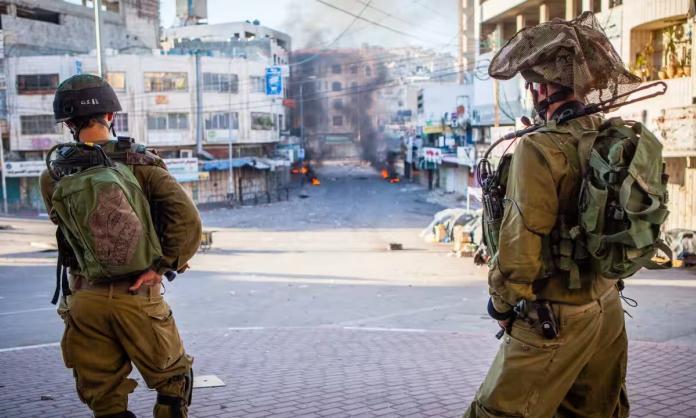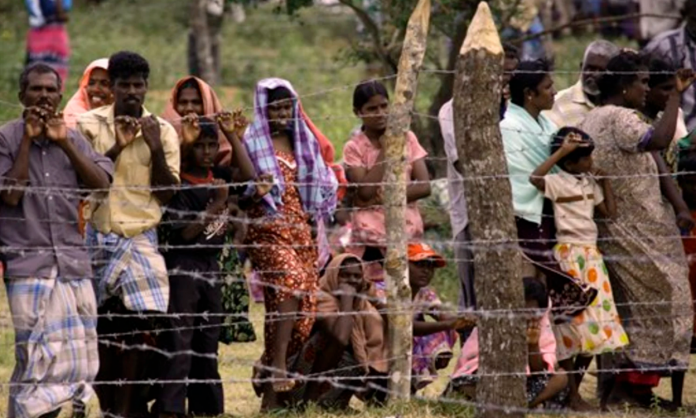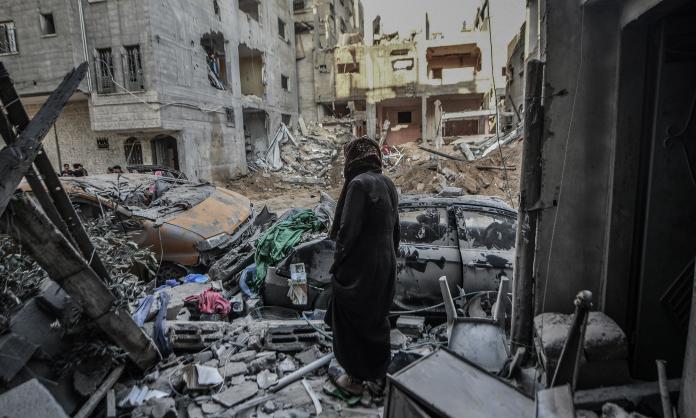As Israel embarks upon the second stage of its assault on the Gaza Strip, which has already killed more than 9,000 and reduced whole swathes of the enclave to rubble, Palestinians living in the occupied West Bank are facing increasing violence on multiple fronts.
More than 100 Palestinians have been killed, hundreds injured, and more than 1,000 arrested in the West Bank since 7 October. According to United Nations representative Martin Griffiths, the week following Operation Al-Aqsa Flood was the deadliest for Palestinians in the West Bank since 2005.
On 19 October, four Palestinian children were killed along with six others by an Israeli missile strike during a raid on the Nur Shams refugee camp in the northern part of the occupied territory. Later that day, not far from Nur Shams, 14-year-old Ali Khazna was shot twice in the chest from an IDF truck.
The next day, residents from the camp protested, with one telling the Guardian, “I’m here to stand with my people. Even if you do nothing to the Israelis they will shoot you—no one is safe these days”.
Israel has used its tight control over movement in the West Bank—with military checkpoints dotting the region’s segregated roads—to blockade Palestinian towns and villages, cutting them off from one another and making daily life for residents impossible.
Israel’s illegal settlers in the West Bank, who now number more than 700,000, are feeling increasingly emboldened to maraud through Palestinian towns with protection from Israeli soldiers.
Last week, Israel’s far-right National Security Minister Itamar Ben-Gvir announced his ministry would purchase 10,000 assault rifles, some of which would be distributed to West Bank settlers. A video shared by Middle East Monitor shows Ben-Gvir shaking hands with settlers and giving out rifles personally.
Settlers have long used a combination of intimidation and violence against Palestinians with the aim of driving them off their land permanently. Since 7 October, almost 1,000 West Bank Palestinians have been forcibly displaced. Farmers have been attacked in their fields and their crops destroyed, and villages have been ransacked by settler mobs. Last week, Middle East Eye reported that settlers vandalised an Arab school near Jericho and left behind dolls smeared with red paint to terrorise students.
Even in the scattered fragments of West Bank territory under formal Palestinian control—the so-called “Area A” set up by the Oslo Accords in the 1990s—it’s not safe. Residents there contend with the repression meted out by the Palestinian Authority (PA).
12-year-old Razan Nasrallah was shot dead by PA forces during a protest in the northern West Bank city of Jenin. In Ramallah, the PA’s stronghold, protests took aim at PA President Mahmoud Abbas, demanding his resignation. Among wide layers of Palestinians, the PA is seen as little more than a security agency subcontracted by Israel to rule Area A enclaves on its behalf.
Life under occupation means the bereaved don’t even have the right to mourn their dead. On 12 October, two men, a father and son, were gunned down at a funeral procession for four Palestinians killed by settlers in the village of Qusra near Nablus. The BBC reported that before the funeral a photo was circulated around the village of a masked group holding weapons and a petrol can, with a message: “To all the rats in the sewers of Qusra village, we are waiting for you and we will not mourn you”.
Unrelenting terror, targeted violence against civilians, repeated humiliation—this is daily life for Palestinians in the West Bank. In the weeks since 7 October however, the terror has reached new heights.







